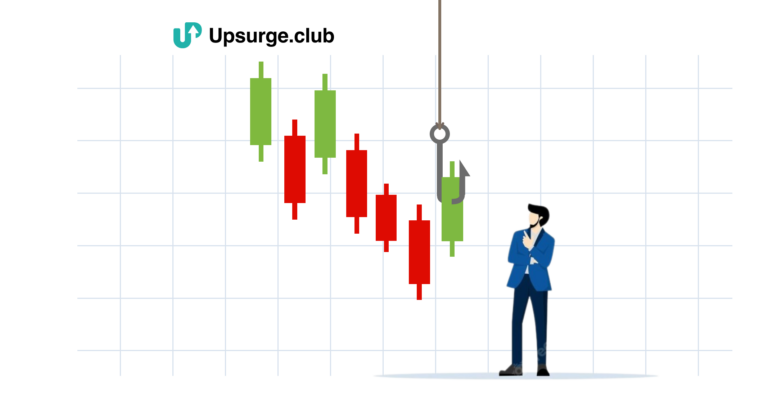As an avid trader, you should always look for effective strategies to help you make profitable trades. One such strategy that has consistently proven its worth is the Ichimoku Cloud Trading Strategy. In this blog, we will share with you 5 simple steps to harness the power of the Ichimoku Strategy and increase your chances of making profitable trades. By following these steps, you can better understand the Ichimoku Cloud and unlock its potential in your trading journey.
Step 1: Understand the Components of the Ichimoku Cloud
Before we dive into the steps, let’s familiarize ourselves with the key components of the Ichimoku Cloud:
- Tenkan-sen (Conversion Line): This line represents the average of the highest high and lowest low over a specific period, typically 9 periods. It provides insights into short-term price momentum.
- Kijun-sen (Base Line): Similar to the Tenkan-sen, the Kijun-sen reflects the average of the highest high and lowest low over a longer period, usually 26 periods. It offers a perspective on medium-term price momentum.
- Senkou Span A (Leading Span A): This line is formed by plotting the average of the Tenkan-sen and Kijun-sen values and is projected 26 periods ahead. It serves as one of the boundaries of the Ichimoku Cloud.
- Senkou Span B (Leading Span B): Calculated by averaging the highest high and lowest low over an extended period, typically 52 periods, the Senkou Span B is projected 26 periods ahead. It acts as the other boundary of the Ichimoku Cloud.
- Chikou Span (Lagging Span): Representing the current closing price, this line is plotted 26 periods behind the price action. It helps traders identify potential support and resistance levels.
Source: Forex Trading Blog – FXCC
Step 2: Determine the Market Trend
The first step in applying the Ichimoku Strategy is to analyze the price position with the cloud. This allows you to identify whether the market is currently in a bullish or bearish trend.
- Bullish trend: If the price is above the cloud, it indicates a bullish trend. This means that the market sentiment is positive, and there is a higher probability of upward price movements.
- Bearish trend: Conversely, if the price is below the cloud, it suggests a bearish trend. In this case, the market sentiment is negative, and there is a higher likelihood of downward price movements.
This information provides valuable insights into the overall market sentiment and helps you align your trades accordingly.
Source: ForexBee
Step 3: Utilize the Kumo Twist
The Kumo Twist is a powerful signal generated by the Ichimoku Cloud when the Senkou Span A and Senkou Span B lines crossover. This crossover indicates a potential shift in market sentiment and can be used to identify entry or exit points.
- Bullish Signal: When the Senkou Span A line crosses above the Senkou Span B line, it generates a bullish signal. This crossover suggests that the market sentiment is turning positive, and there may be an opportunity to enter long positions.
- Bearish Signal: Conversely, when the Senkou Span A line crosses below the Senkou Span B line, it generates a bearish signal. This crossover suggests a potential downtrend in the market and an opportunity to go short.
Source: Forex Factory
Step 4: Assess Support and Resistance Levels
Another important aspect of the Ichimoku Strategy is analyzing support and resistance levels provided by the cloud. The Senkou Span A and Senkou Span B lines act as dynamic support and resistance levels. When the price approaches these lines, it may encounter obstacles in continuing its trend. Traders can use these levels to determine potential profit targets or areas to tighten stop-loss orders, thus managing risk effectively.
Source: Wikimedia Commons
Step 5: Consider Chikou Span Confirmation
The Chikou Span, or the lagging span, can be a confirmation tool in the Ichimoku Strategy. You can validate potential trade signals by comparing the current closing price with its position relative to past price action.
- Bullish confirmation: If the Chikou Span is above the corresponding price action, it provides confirmation for a bullish signal. This suggests that the current price has surpassed previous price levels and indicates potential upward momentum.
- Bearish confirmation: On the other hand, if the Chikou Span is below the price action, it confirms a bearish signal. This implies that the current price is lower than previous price levels, suggesting potential downward momentum.
These confirmations can enhance the reliability of your trading decisions.
Conclusion
In conclusion, the Ichimoku Trading Strategy is a versatile and powerful tool that can help traders identify profitable opportunities in the market. By following the 5 steps outlined in this guide, you can develop a structured approach to trading with the Ichimoku Cloud. Remember to practice patience and discipline and conduct thorough analysis before executing your trades.
To dive deeper into the world of Ichimoku Trading Strategy and unlock its full potential, we recommend enrolling in Upsurge.club’s Ichimoku Trading Strategy Course. This comprehensive course is designed to provide you with in-depth knowledge and practical skills to master the Ichimoku Cloud. Whether a beginner or an experienced trader, this course will equip you with the tools and techniques to make informed trading decisions. Don’t miss this opportunity to enhance your trading strategy and achieve greater profitability.



